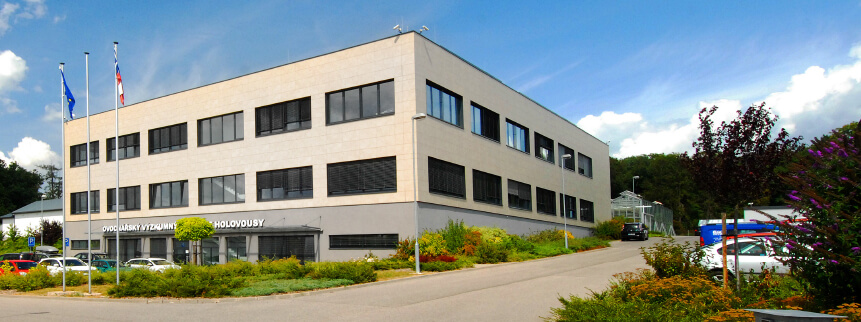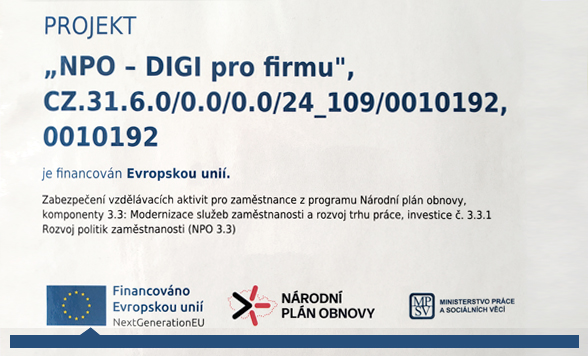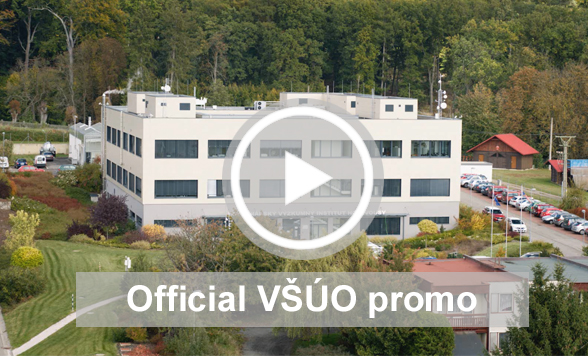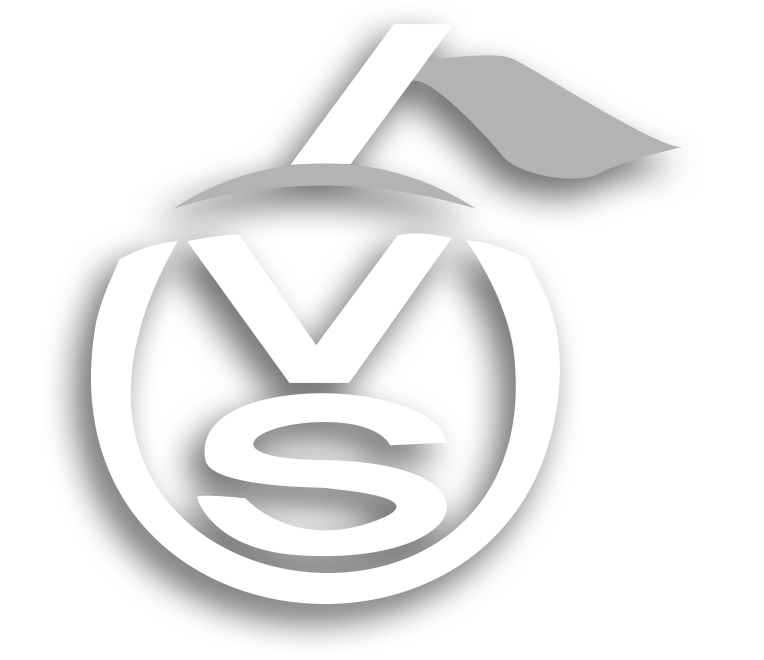VŠÚO laboratories are equipped with modern devices that allow a wide range of analyzes to be performed. The workplace is equipped with other devices, and in the near future, it is planned to purchase complete device equipment for the analysis of residues in fruit.
Device equipment overview:
-
Custom BioGenic System 1500
It is a cryogenic vessel with vacuum insulation. The device is used to store samples in liquid nitrogen vapors.
The container has a specially made built-in for storing samples in aluminum boxes.
Samples in the form of segments of dormant shoots are sealed in polyolefin welding tubes before being placed in boxes.
-
LCi-SD compact system for measuring the course of photosynthesis
It is used to determine the speed of photosynthesis and gas exchange in the leaves of plants and indicates the immediate performance of photosynthesis directly at the plant site
-
CCM 200 plus - device for measuring chlorophyll content
It is used to measure the chlorophyll content in leaves
-
Liquid chromatograph (HPLC, Agilent 1260 Infinity)
The device is intended for the determination of health-promoting substances in promising varieties and new breeding of various fruit species, but also in old varieties of stone and kernel fruit. The main monitored analytes are flavonoids (anthocyanins) and other polyphenolic substances, carotenoids, vitamins and carbohydrates. Selected substances will also be monitored during the process of fruit storage and processing (lyophilization, freezing, juicing). Due to the wide range of analyzes performed (on all types of temperate fruit), this device is expected to be fully utilized.
-
CoulArray (CoulArray Multi-electrode Array Detector)
It is an electrochemical detector, which is tandemly connected to a liquid chromatograph and enables monitoring of electroactive substances. This device is designed primarily to determine the total antioxidant activity.
-
Gas chromatograph with mass spectrometer (GC-MS, Agilent 7890B GC, Agilent 7000C Quadrupiole GC-MS system)
GC-MS is intended primarily for the analysis of the amount of aromatic substances in fruit. These are the spectra of fragrant substances that are characteristic for a certain type of fruit (aromatic aldehydes - e.g. benzaldehyde). The device is also used to check the health safety of fruit (pesticide residues etc.).
One of the purchased devices is a sequencer based on capillary electrophoresis, another of them is a device that belongs to the next generation of sequencers (Next generation sequencing - NGS). With using NGS, a large amount of sample is sequenced on a microchip. The main use is planned in the field of molecular characterization of the genome of fruit crops and varieties stored in the field collections of VŠÚO Holovousy with the aim of selecting the most suitable varieties as a starting material for breeding purposes and creating a core collection. It is expected to find markers that will be in close association with important phenotypic traits. The acquired knowledge will then be used in the selection of optimal parent combinations in breeding programs. Another plan is to research the genetic basis of resistance and resistance to harmful organisms as well as to stress and abiotic factors.
-
FT-NIR spectrometer (Antaris II)
The Antaris II is based on the fact that the measured fruits are not damaged by the device. This device works on the principle of the near-infrared spectrometry (i.e. 800-2500 nm). The device is designed for non-destructive measurement of refraction, penetration, fiber content, water content, etc. For this method, a comparative destructive method (refractometer, penetrometer, etc.) is always needed to be used in order to calibrate the device. If we have enough calibration data (several thousands), it is possible to omit destructive methods.
-
Hand-held NIR spectrometer (MicroPhazir)
The hand-held NIR spectrometer works on a similar principle as the Antaris II with the advantage of being able to take the device directly into the orchard and with the disadvantage of lower accuracy. Again, it is first needed to use the destructive calibration data. It will be mainly used to determine the harvest maturity of fruits directly on the tree/shrub.
-
Titrator (Titroline 7000)
The titrator is intended for simple analyzes of acidity, amount of acids and vitamin C in fruit juice, purées etc.
-
Lyophilizer (LyoQuest Eco-55)
Lyophilization (or freeze-drying) of fruit is a method of preparing a sample for chromatographic methods. The device is also used to process fruit that will be stored for up to one year. The fruit retains its color, aroma and all beneficial substances except water.
-
Differential scanning calorimeter (Q 20)
A differential scanning calorimeter (DSC) is used to measure thermal changes in a sample. The aim of these analyzes is to refine the cryoprotocol so that intracellular ice crystal formation does not occur in the plant material during freezing and thawing, which is lethal to the cells.
-
Programmable freezer (IceCube 14S)
IceCube is used to freeze samples according to predetermined conditions so that ice crystals do not form in the plant during freezing. (These conditions were determined by DSC.) Frozen samples will be transferred to a Dewar storage vessel with liquid nitrogen and stored for up to several decades.
-
Flow boxes (Mini-H), biohazard boxes (Bio-II-Advance-3)
The boxes are used to work with sterile material grown
in vitro.
The penetrometer measures the strength of the pulp in units of kg per penetrated area.
Real-time PCR is a device that allows reading the PCR reaction in real time without the use of electrophoresis, and it is used to diagnose plant pathogens and distinguish their strains according to EPPO methods with great accuracy. The device enables significant acceleration of diagnostic methods both in routine testing and in research projects on plant pathogens. The method can also be used to detect pathogens in insect vectors. Other planned uses are genetic analysis, monitoring of gene mutations, detection of individual genotypes, gene scanning and examination of polymorphisms.
-
ICP-MS mass spectrometer with inductively coupled plasma
Analysis of plant and soil nutritional status. The content of macroelements, microelements and trace elements or heavy metals can be determined in the sample. Samples of plant material must be mineralized on a mass spectrometer before analysis. A block for microwave decomposition is used to prepare minerals.
A continuous SAN ++ flow analyzer is used to determine the nitrogen content in the sample. Based on these analyzes, it is possible to determine the nutritional status of fruit crops and then make the planting fertilization plans.




